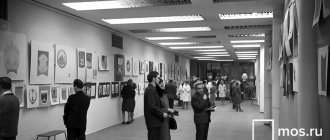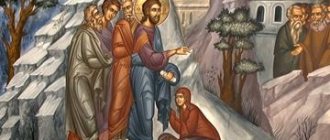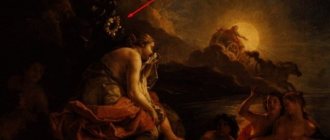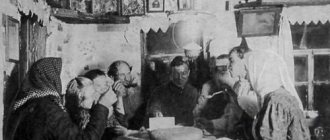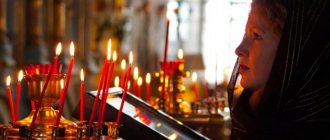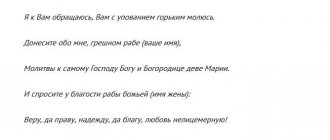At different points in time, several types of coats of arms were made for the Moscow region, but only two became the most famous of them. The author of the first coat of arms in 1781 was the King of Arms Volkov. Then, in 1884, the coats of arms of the Moscow province were changed and made according to new standards, which were developed by King of Arms Kene by decree of Nicholas I. And it was from this historical moment that all new coats of arms were to be made only in accordance with the new rules. Innovations also affected the old coats of arms, which were corrected, but only in the Moscow province were all existing coats of arms modified. Kene managed to ensure that, according to the standards he created, all the coats of arms of the Russian Empire began to correspond to Western European heraldry.
Description of the coat of arms
In total, there were three acceptable versions of creating a coat of arms, which could be used in different compositions (in one color or several):
- Coat of arms - the coat of arms of the Moscow region lacks a crown and ribbons.
- Armorial shield with a crown - the red and yellow ribbons of the three orders are missing on the coat of arms.
- Full coat of arms - the coat of arms of the Moscow region has a golden crown and ribbons.
Heraldic description of the coat of arms: in a scarlet field, St. George the Victorious in silver armor (armor and helmet) and an azure cloak, sitting in a red saddle with gold fringe on a silver galloping horse, striking with a gilded spear, crowned with a gold eight-pointed cross, a golden winged serpent (a dragon with four legs ) with green wings. The coat of arms is crowned with a gold imperial crown and complemented by ribbons of three orders of Lenin.
How did the coat of arms come about?
It’s no secret that the basis of the regional coat of arms was the coat of arms of the capital; you could already see the photo of the coat of arms of the Moscow region above. The regional symbol originated in the Middle Ages. Let's take a closer look at the history of the coat of arms of the Moscow region.
St. George the Victorious was the spiritual symbol of the rulers and inhabitants of Russian lands. Even before his appearance in Rus', George the Victorious was the defender of the Byzantine emperors. How did he end up on the coat of arms of the Moscow region?
At the end of the 14th century, Moscow Prince Ivan III was betrothed to Sophia Paleologus, who came from the ancient Byzantine dynasty of emperors. Of course, the ruler of Rus' adopted many features of Byzantine heraldry and attributes, one of them was a double-headed eagle with a spear that killed a snake.
The final version was agreed upon only in 1883 and depicted the Great Martyr George on the coat of arms. The coat of arms was framed by a crown, which was a symbol of the emperor's power, as well as oak branches as a symbol of valor and courage.
"Revelation of Methodius of Patara"
Almost the entire 15th century, the Grand Duchy of Moscow was waiting for the end of the world, which was supposed to come, according to legend, in the year 7000 from the Creation of the world (1492). At this time, the Byzantine apocrypha, which was attributed to the Greek martyr Methodius of Patara, gained tremendous popularity. “Revelation” contained a statement of world history, starting from the time of Adam and ending with the seventh millennium from the Creation of the world - the coming of the Antichrist and the Last Judgment.
The story is based on the confrontation between the Israelites and the Ishmaelites, as well as the story of the “unclean” peoples that Alexander the Great imprisoned in impregnable mountains. The tribes of the Ishmaelites, defeated by the Israeli leader Gideon and fled to the Etriv desert (this plot goes back to the Bible), in the seventh millennium will emerge from the Etriv desert and enslave numerous countries. After their invasion, lawlessness will reign in the world, and morals will completely collapse. But over time, the righteous Greek king will defeat the rapists.
There will be a flourishing of Christianity and general prosperity. And then the “unclean” peoples imprisoned by Alexander will come out and conquer almost the entire world. Then God will send his archangel, who will destroy all the invaders. After some time, the Antichrist will be born. After the kingdom of the Antichrist will follow the second coming of Christ and the Last Judgment.
It is interesting that the Slavic translation of “Revelation”, widespread in medieval Rus', was significantly revised and incorporated other popular apocrypha: “The Prophecy of Andrew the Fool”, “Tales of Tsar Michael”, etc. Commentators of that time began to talk about God's chosenness of the Russian Land, about the special role of the Grand Duke as the last Orthodox sovereign.
Considering that Constantinople fell in 1453 under the onslaught of the Turks, with whom the Ishmaelites were associated from the prophecy, John III really appeared as the last sovereign of the Orthodox world. In the “Revelation” the denouement was described as follows: “Then the King of Elin, or Greek, will suddenly rise against them (the Ishmaelites) with great rage. Wake up like a man from wine, an impudent one, who is imputed to man as if he were a dead being and needed nothing. That one will then come to them from the Sea of Ethiopia and raise weapons against them in their homeland Etriv and take captive their wives and children. And the yoke of the King of Greece will be on them seven weeks more than their yoke on Greece. And there will be the wrath of the King of Greece on those who rejected our Lord Jesus Christ and the earth will die, and there will be silence on the earth, but there will be no such thing as the last one. And at the end of the age there will be joy on earth and people will rejoice in peace.”
Moscow commentators began to interpret the “Greek King” as an Orthodox sovereign, and the “Ethiopian Sea” as the Black Sea, which washed the shores of Constantinople. After the wedding of John III to the Byzantine princess Sophia Paleologus, the connection between the Grand Duke of Moscow and the “victorious Greek king” from “Revelation” became even stronger. True, the apocrypha said that the king was supposed to bear the name of Michael, but, apparently, this did not bother the commentators.
Based on the concept of the chosenness of John III, which arose in Muscovy, researcher A. Yurganov gave an international interpretation of the horseman symbol on the seal:
“The figure of the victorious Tsar in the symbol of the Russian state signified the Russian Tsar, who would be destined to give power to God at His Second Coming. Essentially, this is the symbolic and heraldic embodiment of the idea of the Third Rome, a God-saved kingdom. Of particular importance is the fact that the horse in this composition is the Orthodox faith itself, which the king and sovereign must preserve in purity.
The defeat of the serpent by the scepter-spear is confidence in the victory of good, the triumph of Christ in the final battle with evil. In this regard, some difference in tone is revealed: if for Greek legends the confrontation ends either with the crouching of a bitten horse or the fall of the rider, then in the symbol of the Russian state we see a demonstration of confidence.”
It must be admitted that the belief in the end of times was so strong on the Russian Land that many in 1491 did not sow the fields, which led to famine. But the light show did not come, but this did not in any way affect the idea of \u200b\u200bthe chosen one of John III.
It is interesting that the snake fighter appears on the seal of the Moscow sovereign 5 years after the supposed end of the world. How to explain this? A number of researchers claim that the Moscow elite was aware of the “Western forecast” of the end of the world. From the second half of the 15th century, the most prominent European astrologers gave their date for the presentation of light - 1524 (7032 from the Creation of the world). Therefore, John III probably adhered to this particular date. True, this was also seen as the influence of the Judaizer sect on the sovereign. We will not talk about all the intricacies of this heresy, but we note that at this moment many books of occult, primarily astrological, content appeared in Rus'.
For example, the famous Six-Winged, whose authorship was attributed to the Kyiv rabbi-Kabbalist. The foundation of the heresy was attributed to a certain Skharius, a Jew who came to Novgorod from the Lithuanian lands. The figure of Shariya still causes controversy among historians. Some argue that Skaria was invented by opponents of the Judaizers, others see in him one of the largest kabbalists of that time in Europe, the Kiev rabbi Zechariah Ben Aharon ha-Kogen, and others call Skaria the Genoese prince of Taman Zaccaria Ghisolfi, whom John III invited to Moscow several times.
The appearance of St. George the Victorious in Rus' in the form of a horseman is associated with the figure of the latter. The fact is that Taman was financed by the Genoese bank San Giorgio (Bank of St. George), and according to some sources, Ghisolfi was the conductor of the interests of this financial structure in Muscovy. The emblem of the bank was St. George piercing the serpent with a spear. This fact has led some researchers to say that the appearance of the Victorious on the royal seal may illustrate some important agreement between the Bank of San Giorgio and the Grand Duchy of Moscow.
Symbolism
We can see what is depicted on the coat of arms of the Moscow region in the photo. Let's take a closer look at what each of the unspoken symbols means.
- St. George the Victorious is the basis of the coat of arms. The saint became the patron saint of the entire Russian population. St. George the Victorious personifies the eternal theme of the confrontation between good and evil, in which good wins. The serpent, struck by a spear, dies at the hands of the guardian of the Russian lands.
- Gold, as at all times, is a symbol of wealth, and in Christianity this noble metal is also faith and charity.
- Silver - purity and innocence, justice and revelation.
- Chervlen as a symbol of courage, courage and strength of the Russian people. Red is the color of beauty and celebration.
- Blue (azure) is an image of honesty and virtue, impeccability in everything.
- Purple symbolizes dignity and power.
- The crown is a symbol of the status of the Moscow region.
- Ribbons of 3 Orders of Lenin are awards of the region, which it was awarded three times in the 20th century.
Similarities and differences
As already mentioned, the coat of arms of the Moscow region is very similar to the coat of arms of Moscow. You need to figure out what similarities there are and how these coats of arms differ.
The first thing that catches your eye is the identical main figures on the coats of arms, but here the first significant difference emerges - on the coat of arms of Moscow, St. George the Victorious is turned in the other direction and the color scheme is brighter and more colorful.
The next difference concerns the image of the snake - on the coat of arms of Moscow it is made in black, but on the coat of arms of the Moscow region there is a golden snake with greenish wings.
Similarities in the color of the shields: both coats of arms are made in a rich, eye-catching scarlet color, in addition to this, the horsemen are also similar, both in silver.
George the Victorious: biography
The main dignity and symbol of the coat of arms is St. George the Victorious, and therefore I would like to consider him in more detail not as a symbolic image, but as a real person.
Great Martyr George was born into a rich and God-fearing family and was raised in accordance with Christian principles. George grew up as a strong and brave young man and entered military service. Very quickly he achieved success in this field and received the title of chief of a thousand. At that time, Diocletian ruled, who was famous for his cruelty towards Christians and fanatical propaganda of the Roman gods. George could not endure the painful executions and persecution of Christians and one day appeared to Diocletian and declared himself a Christian. The ruler tried to persuade George to renounce the Christian faith, but nothing came of it, and Saint George was imprisoned, where he was subjected to sophisticated torture, but no amount of deprivation and physical hardship broke George. Then the emperor decided that the prisoner had resorted to magic, and ordered his head to be cut off. Thus the intercessor of all Christians passed away.
The relics of St. George the Victorious were left in the city of Lydda (now Lod), which is located in Israel, while the head was kept in the Roman temple, which was dedicated to him.
On the icons, George sits astride a white horse and slays a serpent with a spear. This image is based on a legend according to which, not far from where George’s family lived, there was a lake in which a snake lived. Residents regularly gave the snake by lot to be eaten by a person. And then one day the lot fell on the daughter of the emperor of those places, they tied her to a tree and began to wait for the appearance of a monster. When the snake opened its mouth to swallow the unfortunate woman, George appeared on the shore and killed the snake, thereby saving the girl.
Where can you venerate the icon of the Great Martyr?
The icon of St. George the Victorious is present in many Orthodox churches. As before, this great shrine continues to protect believers from various dangers, give miracles of healing, and help in difficult life situations.
The most famous lists, from which a huge number of Christians seek to pray, are located in the following places:
- within the walls of the cathedral, named in honor of the Holy Great Martyr (Old Archers);
- in the St. George Church of the Odintsovo Deanery (Moscow Diocese);
- in the village of Monino in a church named after St. George the Victorious.
Residents of Moscow or visitors can venerate both the icons and the relics of the saint. A piece of this greatest shrine is kept in the capital’s temple located on Poklonnaya Hill.
Historical continuity
The regional coat of arms laid the foundation for the creation of coats of arms for each of the cities of the Moscow region.
So, in 1989, namely on September 21, by decision of the Dzerzhinsky Council of Deputies, the coat of arms of the city of Dzerzhinsk was created and approved.
Of course, St. George the Victorious is not included in the symbolism of each coat of arms, because then they would not be unique. But it is the coat of arms of the Moscow region that personifies all the power and greatness of the cities of the region, which are always able to unite in the face of danger and defeat any enemy.
This is a special emblem made in accordance with heraldic canons.
It represents an interconnected system of images and colors, which carries the idea of the integrity of the state and is inextricably linked with its history, traditions and mentality.
The appearance of this official sign is enshrined in the Constitution.
Brief description and meaning of the symbols of the coat of arms of Russia
This state insignia is a red heraldic shield, in the middle of which there is a golden double-headed eagle. The bird holds an orb in its left clawed paw, and a scepter in its right.
On each of the heads there is a crown, and on top there is another, larger one. All three royal decorations are connected by a gold ribbon.
In the center of the shield, on the eagle’s chest, there is another red cloth. It depicts a plot familiar to every Russian: St. George the Victorious kills a snake.
There are many icons and paintings illustrating this legend. This is the most recognizable image of the saint. On the emblem he is represented as a silver rider on a silver horse, wearing a blue cloak. A monster under the hooves of a black horse.
Iconography of the image of the saint
Paintings dedicated to St. George the Victorious were created by Christian artists in different eras. This plot became known to Russian icon painters in the mid-12th century thanks to Byzantium. Several ancient paintings depicting St. George the Victorious were created on Russian territory:
- The oldest image of the great martyr is considered to be a half-length image located in the Assumption Cathedral of the Moscow Kremlin;
- another ancient face of the saint is contained on frescoes located in Staraya Ladoga in the Church of St. George;
- The famous hagiographic icon of the righteous man, created at the beginning of the 16th century, is kept in the Andrei Rublev Museum of Ancient Russian Art.
Until the end of the 15th century, there was a short version of this relic. Such a canvas did not contain numerous details, but only the main plot. Subsequently, the picture began to be replenished with new, more detailed elements.
How were the symbols on the coat of arms of the Russian Federation formed and what do they mean?
Today, heraldry is an auxiliary branch of historical science. The emblems of countries, along with annals and chronicles, represent the most important historical evidence.
In Western Europe, during the times of chivalry, every noble family had a symbol that was inherited from generation to generation. It was present on the banners and was a sign of distinction by which a representative of the clan was recognized both on the battlefield and at the feast. In our country, this tradition has not been developed. Russian soldiers carried embroidered images of the great martyrs, Christ or the Virgin Mary into battle. The Russian heraldic sign originates from princely seals.
What do the main elements of the Russian coat of arms mean: St. George the Victorious
On the princely seals there were the patron saints of the rulers and an inscription indicating who owned the symbol of power. Later, a symbolic image of the head began to appear on them and on coins. Usually it was a horseman holding some kind of weapon in his hand. It could be a bow, sword or spear.
Initially, the “rider” (as this image was called) was not a sign only of the Moscow principality, but after the unification of lands around the new capital in the 15th century, it became an official attribute of the Moscow sovereigns. He replaced the lion who defeats the snake.
What is depicted on the state emblem of Russia: a double-headed eagle
It should be noted that this is a popular symbol, which is used as the main one not only by the Russian Federation, but also by Albania, Serbia, and Montenegro. The history of the appearance of one of the main elements of our emblem goes back to the times of the Sumerians. There in this ancient kingdom he personified God.
Since antiquity, the eagle has been considered a solar symbol associated with the spiritual principle and liberation from bonds. This element of the Russian coat of arms means courage, pride, desire for victory, royal origin and the greatness of the country. In the Middle Ages it was a symbol of baptism and rebirth, as well as of Christ in his ascension.
In Ancient Rome, the image of a black eagle was used, which had one head. Such a bird was brought as a family image by Sophia Paleologus, the niece of the last Byzantine emperor Constantine, whom Ivan the Terrible’s grandfather, Ivan III, known as Kalita, married. In Russia, the history of the famous double-headed eagle begins during his reign. Together with his marriage, he received the right to this symbol as a state emblem. It confirmed that our country had become the heir of Byzantium and began to claim the right to be a world Orthodox power. Ivan III received the title of Tsar of All Rus', ruler of the entire Orthodox East.
But during the time of Ivan III, the official emblem in the traditional sense still did not exist. The bird was featured on the royal seal. It was very different from the modern one and looked more like a chick. This is symbolic, since Rus' at that time was a young, fledgling country. The eagle's wings and beak were closed, the feathers smoothed.
After the victory over the Tatar-Mongol yoke and the liberation of the country from centuries-old oppression, the wings flutter open, emphasizing the power and might of the Russian state. Under Vasily Ioanovich, the beak also opens, emphasizing the strengthening of the country’s position. At the same time, the eagle developed tongues, which became a sign that the country could stand up for itself. It was at this moment that the monk Philotheus puts forward a theory about Moscow as the third Rome. Spreading wings appeared much later, in the early years of the Romanov dynasty. They showed neighboring hostile states that Russia had perked up and rose from sleep.
The double-headed eagle also appeared on the state seal of Ivan the Terrible. There were two of them, small and large. The first was attached to the decree. There was a rider on one side and a bird on the other. The king replaced the abstract horseman with a specific saint. St. George the Victorious was considered the patron saint of Moscow. This interpretation would finally be consolidated under Peter I. The second seal was applied and made it necessary to combine two state symbols into one.
This is how a double-headed eagle appeared with a warrior on a horse depicted on its chest. Sometimes the rider was replaced by a unicorn, as a personal sign of the king. It was also an Orthodox symbol taken from the Psalter, like any heraldic sign. Like the hero defeating the snake, the unicorn signified the victory of good over evil, the military valor of the ruler and the righteous strength of the state. In addition, this is an image of monastic life, the desire for monasticism and solitude. This is probably why Ivan the Terrible highly valued this symbol and used it along with the traditional “rider”.
What do the elements of the images on the coat of arms of Russia mean: three crowns
One of them also appears under Ivan IV. It was on top and was decorated with an eight-pointed cross as a symbol of faith. The cross has appeared before, between the heads of birds.
During the time of Fyodor Ioanovich, the son of Ivan the Terrible, who was a very religious ruler, it was a symbol of the passion of Christ. Traditionally, the image of a cross on the coat of arms of Russia symbolizes the country's acquisition of ecclesiastical independence, which coincided with the reign of this tsar and the establishment of the patriarchate in Rus' in 1589. The number of crowns varied at different times.
Under Tsar Alexei Mikhailovich there were three of them, the ruler explained this by the fact that then the state absorbed three kingdoms: Siberian, Kazan and Astrakhan. The appearance of three crowns was also associated with the Orthodox tradition, and was interpreted as a sign of the Holy Trinity.
It is currently known that this symbolism on the coat of arms of the Russian Federation means the unity of three levels of government (state, municipal and regional), or its three branches (legislative, executive and judicial).
Another version suggests that the three crowns mean the brotherhood of Ukraine, Belarus and Russia. The crowns were secured with ribbon already in 2000.
What does the coat of arms of the Russian Federation mean: scepter and orb
They were added at the same time as the crown. In earlier versions, the bird could hold a torch, a laurel wreath, and even a lightning bolt.
Currently, an eagle holding a sword and a wreath is on the banner. The attributes that appeared in the image personified autocracy, absolute monarchy, but also indicated the independence of the state. After the 1917 revolution, these elements, like the crowns, were removed. The Provisional Government considered them a relic of the past.
Seventeen years ago they were returned and now adorn the modern state insignia. Scientists agree that in modern conditions this symbolism of the coat of arms of Russia means state power and the unity of the state.
"Moscow coat of arms: the hero pierces the reptile"
It would seem that this is an indisputable truth: St. George the Victorious has been considered the patron saint of the Russian capital since ancient times, and his image is depicted on the Moscow coat of arms, which later became part of the state coat of arms. But why is the saint depicted without a halo? And is St. George really depicted on the coat of arms, which has undergone many symbolic changes throughout its history? Discussions about this are still ongoing.
How did Moscow rise?
| Moscow coat of arms 1730 |
Saint George came to Rus' from Byzantium along with the adoption of Christianity.
The son of St. Vladimir the Great, Prince Yaroslav the Wise was the first to be baptized with the name George, establishing the tradition of venerating St. George the Victorious at the state level. According to the Byzantine custom of depicting both the ruler himself and his patron saint on coins and seals, the image of St. George on foot appears for the first time on the coins of Yaroslav. Yaroslav also founded the first St. George churches in Rus': the Yuryev Monastery near Novgorod, for which in 1170 the oldest surviving icon of St. George was painted - by order of the son of the blessed Andrei Bogolyubsky, Prince George, who reigned in Novgorod and became the first husband of the Georgian Queen Tamara. Ivan the Terrible brought this image to Moscow, and now it is kept in the northern choir of the Assumption Cathedral. In Kyiv, Yaroslav the Wise founded the St. George Monastery, similar to the St. George Churches of Constantinople. The day of the consecration of his cathedral, November 26, became the second, “winter” feast of St. George the Victorious. (According to legend, it was on this day that St. George defeated the serpent.) The name “George” translated from ancient Greek means “farmer,” and his two holidays marked the cycle of rural work in Rus': “They begin with Yury, and they end with Yury.” In Rus' he was called Yegor and Yuri - from the abbreviated Gyurgiya. A fateful event for Moscow occurred at the end of the 11th century, when the Kiev prince Vladimir Monomakh named his newborn son Yuri - this is how Saint George the Victorious became the heavenly patron of the founder of Moscow, Prince Yuri Dolgoruky. Its seal depicted Saint George on foot and drawing a sword - still without the serpent. Legend has it that one day, on the way from Kyiv to Vladimir, Yuri Dolgoruky stopped to visit the boyar Kuchka; Angry at the disrespectful reception, he ordered his execution, but, having loved his beautiful possessions, he ordered the city of Moscow to be built there. And as if he gave her coat of arms the image of his heavenly patron - a horseman trampling a serpent with a spear.
This, of course, is a legend, but this is where all mysteries begin. It is indisputable that the Moscow coat of arms, created in the 18th century, depicts St. George the Victorious. But when exactly it appeared in state symbols, historians have not yet come to a common opinion. It is believed that the emblem of St. George as a Moscow grand ducal sign first appeared under Ivan Kalita’s elder brother, Prince Yuri Danilovich, as his heavenly patron. The image of a walking serpent fighter (a warrior swinging a sword at a serpent) in the Principality of Moscow is found on the coin of Grand Duke Ivan II the Red, son of Ivan Kalita. The first image of a horseman with a spear appeared on the seal of Dmitry Donskoy. The seal of his son Vasily I also depicts a horseman with a spear pointing downward, and since then this symbol has established itself as the Moscow emblem, becoming hereditary. On the coins of Vasily II, the grandson of Dmitry Donskoy, a clear image of a horseman appears, striking a serpent in the open mouth with a spear, reminiscent of the iconography of the “Miracle of St. George about the serpent.” Historian V.B. Muravyov, who studied the dramatic history of the Moscow coat of arms in his recent book “Legends of Ancient Moscow,” believes that St. George is definitely recognizable here and that from that time – the middle of the 15th century – the image of St. George the Victorious becomes a stable symbol of the Moscow prince and the Moscow principality . And under Ivan III, the image of the horseman takes on its final, classic form.
However, since until the beginning of the 18th century this horseman was called a “rider,” researchers had two polar points of view. The “Orthodox” version says that this is St. George as the patron saint of Moscow and the Moscow princes. Supporters of the “secular” version consider the “rider” to be a purely Russian symbol of the warrior prince, the sovereign, who only during the time of Peter the Great began to be associated with St. George the Victorious. These disagreements arose, firstly, because of the Russian tradition of depicting both the patron saints of the princes and themselves on seals and coins, often without a halo and wearing a crown, which gave rise to seeing the image of rulers in the “rider”. The absence of a halo is the main fact that allows us to consider the “rider” a secular person. Secondly, judging by the surviving historical evidence, the Russians themselves often called this horseman a prince or tsar, while St. George in the “rider” on the Moscow emblem was recognized mainly by foreigners, due to the similarity of the horseman with the iconographic image of St. George the Victorious, and in Europe he was also very popular and was revered as the patron of chivalry. There are conciliatory versions that this is both the image of St. George and the Moscow prince, likened to a holy warrior. Or that initially it was the image of St. George, then from the time of Ivan the Terrible, who was crowned king, it became the image of the sovereign until the era of Peter the Great. There are many versions. But today the “St. George’s” are strengthening their position, citing arguments in defense of the fact that the Moscow horseman is an image of St. George the Victorious.
His veneration in Rus' has always increased in difficult but fateful times for the country. When Dmitry Donskoy gathered the forces of the Russian lands to repel the enemy, Rus' was languishing under the foreign yoke, and the image of the Holy Victorious was especially close to the Russian people as the Christian patron of the army, warriors for the Fatherland. This is evidenced by the thanksgiving Church of St. George in Kolomenskoye, which was founded by Dmitry Donskoy, returning from the Battle of Kulikovo, where St. George was seen on the battlefield fighting on the side of the Russians. (There was a legend that Saint George killed the serpent in the Kolomenskoye ravine.) George’s miracle about the serpent was an image of the victory of Christianity over the Gentiles. And probably, since the time of Dmitry Donskoy, Saint George has been revered as the patron saint of Moscow.
Grand Duke Ivan III began a new era in the history of Russia, when Moscow, which built the Russian lands around itself into a single cohesive state, became the successor to the Second Rome after the fall of Constantinople. Perhaps this was also related to the strengthening of state veneration in Moscow of St. George the Victorious, who was the patron saint of the Byzantine emperors. In 1464, a white stone high relief icon of St. George appeared on the Kremlin Frolov Tower. The image was placed above the main gate of the city on the outside, and two years later the image of another patron of Moscow, St. Demetrius of Thessaloniki, was placed on the inside, entrusting the saints with the protection of the Kremlin from enemies. When Italian masters built the Spasskaya Tower on the site of the Frolovskaya Tower, an image of the Savior was later placed above its gates, and the sculpture of St. George was moved to the St. George Church near the Spasskaya Tower, and then to the Ascension Monastery. (In the 17th century, Saint George was again entrusted with the protection of the city, placing his image above the Resurrection Gate of Kitay-Gorod, leading to Red Square. It was to this icon that Marina Tsvetaeva appealed in 1918 in her famous poem: “Guardian of fatal Moscow, come down from the gates! ".) The image of St. George was on the grand ducal banners of Ivan III, with which he went to the Great Stand on the Ugra, and the victory was attributed to the patronage of St. George.
During the formation of the national state, the personal emblem of the Moscow prince becomes the emblem of the state. And under Ivan III the prototype of the Moscow coat of arms finally appeared. The famous state seal of 1497, which N.M. Karamzin considered the source of the symbolism of the Russian state emblem, on the front side there was an image of an equestrian rider striking a serpent with a spear, and on its reverse side a double-headed eagle first appeared. The horseman is easily recognizable as the iconographic image of the “Miracle of St. George about the Serpent.” According to O.V. Yakhonta, the horseman on this seal accurately reproduces the image of the sculptural icon of St. George from the Frolov Tower. There is another version that the image of the horseman was borrowed from the tombstone of Metropolitan Theognostus in the Assumption Cathedral, where the “Miracle of George on the Serpent” was minted. Researchers, those who see Saint George in this horseman, believe that his image on the state seal and in Moscow symbols of the time of Ivan III was also a sign of the succession of the Moscow princes to the Vladimir and Kyiv princes. In addition, the role of the Moscow prince as a stronghold of Orthodoxy was symbolically emphasized.
However, this rider does not have a halo.
The authors of the book “Symbols, Shrines and Awards of the Russian State” give a very interesting explanation. In their opinion, this image of the horseman does not correspond to the ancient Orthodox canons in some other elements, for example, he stabs the serpent in the neck, and not in the throat, but this image of St. George “most of all resembles its embodiment in works of Western European art of the Renaissance, before everything Italian." In other words, the Italian craftsmen, who arrived at the call of Ivan III to build the cathedrals and fortresses of the Third Rome, could, at his own order, complete the state seal, where they depicted St. George in the traditions more familiar to them, as was customary in Europe - without a halo.
Under Ivan the Terrible, a snake-wrestler rider was installed on the chest of a double-headed eagle as a symbol of the unity of the Russian principalities around Moscow. A crown appears on the horseman's head, apparently as a sign of Ivan the Terrible's acceptance of the royal title. Adherents of the “secular” version, who consider the horseman to be an image of the Tsar as a defender of Russia, support it with such evidence. Ambassadors of Ivan the Terrible stated that the seal depicted “the sovereign on horseback.” When in the middle of the 17th century, the Duke of Tuscany asked the Russian ambassador whether St. George the Victorious was depicted on horseback, he replied: “Our great sovereign on an argamak” (a thoroughbred horse). In the Armory Chamber's inventory of the coat of arms of 1666–1667 it is said that on the chest of a double-headed eagle “a king on horseback is stabbing a serpent with a spear.” The clerk of the Ambassadorial Prikaz, Grigory Kotoshikhin, claimed that the seal of the Moscow principality was carved: “The king on horseback defeated the serpent.” (There is also a very simple explanation: “A man on a horse stabs a serpent”). If the horseman is the sovereign, then what about the serpent? There is no disagreement about the symbol of the serpent: it is a biblical image of evil and the personification of the enemies of the Russian land.
Supporters of the “St. George’s” version give their interpretations of the listed facts. Firstly, the very absence of a halo in the image of St. George the Victorious (and other deviations from the canons) on the seal of Ivan III and under his successors made the horseman in the minds of the Russians a “tsar” or “a man on a horse,” that is, a secular symbol. Hence the vague name “rider”. V.B. Muravyov proposed a more complex explanation: the rider on the Moscow coat of arms was called “sovereign” by Russian officials. Such identification of an image on a state sign (coin, seal, emblem) with the sovereign himself (or his heavenly patron, which also symbolized the sovereign) “has been traditional for Russia since ancient times, and the Russian bureaucracy did not dare to abandon this tradition.” Thus, this is the official interpretation of state officials, which emerged from the ancient rule of minting the image of the ruler or his heavenly patron on state signs. Foreigners not associated with the Russian bureaucracy openly called the rider on the eagle's chest Saint George, including Samuel Collins, the personal physician of Tsar Alexei Mikhailovich. But, according to G.V. Vilinbakhova and T.B. Vilinbakhova, Europeans easily recognized Saint George in the horseman because he was depicted without a halo, as was customary in Europe.
Supporters of the “secular” version also point to the fact that on the state emblem, placed on the title page of the Bible published in Moscow in 1663, the serpent fighter rider on the chest of a double-headed eagle is given a portrait resemblance to Tsar Alexei Mikhailovich. However, the largest researchers of Orthodox medieval Moscow M.P. Kudryavtsev and G.Ya. Mokeev argue that the image of a king on a horse, killing a serpent with a spear, is given here instead
the traditional coat of arms of Moscow - St. George the Victorious. And they point to the inscriptions above the coat of arms from the book of the prophet Isaiah: “I have appointed a king with righteousness and ruled all his ways”; “This will build My City” (Is. 45: 13).
Alexey Mikhailovich considered himself a defender of Ecumenical Orthodoxy. The Moscow kingdom became the main patron of the Eastern Patriarchates, which vegetated under the Ottoman yoke. The idea arose of the liberation of Constantinople and the creation of an Orthodox empire on the territory of the former Byzantium and the Balkans under the rule of the Moscow Tsar. Moscow, built in the image of the Heavenly Jerusalem - the City of God, was also called the New Jerusalem on earth, according to the prophecies of the book of Isaiah about the election of a new people and city, to which the glory of the people of God will pass: “For you leave your name for the saturation of My chosen ones, but you will be beaten Lord; But those who work will call Me a new name” (Isaiah 65:15). The depiction of Alexei Mikhailovich as a warrior killing a serpent here symbolizes the idea of Rus' as the last world stronghold of Orthodoxy, and such a variation could well have taken place in the book.
Scientists have not come to a common conclusion about the identification of the Moscow horseman, but it was he who became the prototype of the coat of arms of Moscow. The word “coat of arms,” literally meaning “inheritance,” began to enter Russian usage under Alexei Mikhailovich. In 1672, the “Titular Book” appeared, which collected images of 33 coats of arms of regions and cities that were part of the full royal title. Even earlier, in 1669, the tsar ordered the craftsmen to depict 14 seals “in coats of arms” in the paintings on the walls of the Kolomna Palace, that is, to place state emblems on shields, by analogy with European coats of arms. Young Peter I drew attention to them.
Saint Yegory on horseback
| Moscow coat of arms 1883 |
It is believed that Peter the Great, without further ado, was the first Russian to call the Moscow horseman Saint George the Victorious.
His note, presumably dating back to 1710, has been preserved: “This has its origins from there, when Vladimir, the Russian monarch, divided his empire among his twelve sons, of whom the Vladimir princes took the coat of arms of St. Yegor, but then Tsar Ivan Vas [Ilyevich], when he again approved the monarchy, collected from his grandfather, and was crowned, when he accepted the eagle as the coat of arms of the Russian Empire, and placed the princely coat of arms in its chest.” During the reign of Peter I, the creation of the Moscow coat of arms began, on which Saint George was depicted in the Russian tradition, which has its origins in Orthodox iconography. In 1722, the emperor established the Heraldry, which was supposed, among other things, to draw up city coats of arms - according to Peter’s plan, these coats of arms were supposed to be placed on the banners of the troops stationed in a particular city. On the recommendation of Jacob Bruce, the Piedmontese Count Francis Santi, who knew European heraldic rules well, was appointed to the position “for creating coats of arms” - according to them they were going to create Russian coats of arms and correct traditional Russian emblems. However, Santi wisely assessed that success would come only if he did not copy European heraldry for Russia, but created Russian one according to Russian traditions. In addition, having thoroughly studied the “Titular Book”, Russian seals and portraits of sovereigns, he saw that coats of arms actually exist in Rus', in some way corresponding to the provisions of Western European heraldry, and this caused him to respect the ancient Russian and Moscow emblems. That is why he retained the right of Russian heraldry to have its own laws. Thus, Saint George on the Moscow coat of arms was depicted facing the viewer with his right side (as on most icons of the “Miracle of Saint George on the Serpent”), that is, on the left heraldic side. Whereas, according to the rules of heraldry, it was necessary to do the opposite and turn the rider to the right heraldic side, with his left side towards the viewer. In Western Europe, this rule arose for natural reasons: living creatures, such as a horseman or a lion, were always depicted with their left side facing the viewer, so that in battle or in a tournament these figures on the knight’s shield, which he held in his left hand, would not appear to be running away from the enemy.
The sketch of the Moscow coat of arms looked like this: in a red field, Saint George with a golden crown, in Greek half-armor covering his chest and back, thrusts a spear crowned with a cross into the mouth of a black serpent. And here he is depicted without a halo, but his holiness was indicated by the cross at the top of the spear. In the subsequent history of the Moscow coat of arms, it was increasingly brought closer to the requirements of European heraldry.
After the death of Peter the Great, Santi was falsely accused of plotting against Peter II, and he spent 15 years in Siberian exile. His design, although it never became the official coat of arms of Moscow, was approved by the Senate in 1730 as a coat of arms for the banner of Moscow regiments. At the same time, the state emblem was approved with the Moscow coat of arms on the chest of an eagle: “George on a white horse, defeating the serpent, epancha (cloak - E.L.
) and the spear are yellow, the crown is yellow, the serpent is black.” So, the saint’s cloak on the coat of arms is not red, as on the icon - a symbol of the shed blood of the great martyr, but golden. Heraldic canons are becoming more and more established.
A new era of the Moscow coat of arms began under Catherine the Great. On winter St. George's Day, November 26, 1769, she established the Order of the Holy Great Martyr and Victorious George in Russia. Since then, on November 26, an annual reception was held in the Winter Palace in honor of the order's celebration. For ceremonial dinners, the Empress ordered a porcelain St. George service: all its items bore images of order insignia and the St. George ribbon. And the throne room in the Winter Palace was St. George's Hall, created by Giacomo Quarenghi on the orders of the Empress.
Under Catherine II, Moscow returned to the creation of its official coat of arms after the reform of local government, when each Russian city was required to have its own, the highest approved coat of arms, by analogy with the free cities of Western Europe. Comrade of the King of Arms, Lieutenant Colonel I.I. von Enden unsuccessfully corrected the already existing Moscow coat of arms, namely: he changed the rider from ancient half-armor into the full armor of a medieval knight. This tradition was accepted in Europe, since St. George was revered as the patron saint of chivalry, but for Orthodox Russia such an interpretation of St. George the Victorious was alien. In addition, the spear on the coat of arms has lost the cross. However, the Russian tradition of depiction on the left heraldic side was preserved. The colors have also been preserved: a red field, a white horse and a black serpent. The color of the cloak is unknown, but it is believed that it was gold, as described in the statute of the Order of St. George. On December 20, 1781, the Empress approved this particular coat of arms of Moscow as the official one.
Only in the middle of the 19th century was it created according to the rules of European heraldry. This change is connected with the wishes of Nicholas I and with the activities of the German baron B.V. Kene, manager of the Arms Department of the Department of Heraldry, who was also involved in the creation of the Great State Emblem. “In accordance with the requirements of heraldry,” he turned the figure of the horseman to the right heraldic side - with his left side towards the viewer. Even False Dmitry I, on his seal, tried to “unfold” the Moscow horseman in a European way, and the encroachment on the Moscow coat of arms seemed to be the “destiny” of foreigners. In order to hit the serpent on the left of the horse with a spear, the rider had to drop the bridle and take the spear with both hands. However, the spear that crowned it was returned to the spear. The horseman was still depicted in full knight's armor, but under Alexander III in 1883 the half-armor was returned to him. Instead of gold, the mantle of St. George became “azure” - blue. (O.A. Revo presumably connects this with the possible desire of the heraldry to bring the colors of the Moscow coat of arms into line with the colors of the national flag of Russia: white horse, blue cloak, red shield). Instead of a black serpent, a golden dragon with green wings appeared. In the old days, they did not separate the serpent and the dragon - they were one and the same creature, the image of the biblical enemy. Historian G.I. Korolev, who wrote the brilliant study “The Serpent or the Dragon,” considers one of the possible reasons for remaking the serpent into a dragon in the 19th century to be the same desire to bring Russian heraldry into agreement with Western European heraldic rules.
Domestic heraldists were very upset by these changes, because it was the Moscow coat of arms, as the most solid and earliest established in Rus', that should have been protected from arbitrary innovations. Formally applied Western heraldic rules without taking into account the features of the national coat of arms seemed to be alien principles, a disregard for national traditions.
The iconographic image of St. George the Victorious, which was perceived as a holy symbol of ancient Moscow, remained a favorite among the people. The writer Ivan Shmelev cites a conversation he overheard between two Moscow apprentices: “St. Yegory guards our Moscow with a shield and a spear, that’s why it’s written in Moscow... What’s in our eagle’s heart? Moscow is written on the coat of arms: Saint Yegory himself, ours, therefore, Moscow. I went from Moscow to all of Russia.”
Victorious
| Moscow coat of arms 1993 |
After the revolution, the coat of arms of Moscow was abolished.
On February 27, 1925, the Presidium of the Moscow City Council approved the first Soviet coat of arms, drawn up by the architect D. Osipov - Moscow became the first city to receive a coat of arms with revolutionary, proletarian symbols. The place of St. George was taken by a five-pointed star - the victorious symbol of the Red Army. Against the background of the star was an obelisk, which was the first revolutionary monument of the RSFSR, a symbol of the firmness of Soviet power. (This obelisk, a monument to the first Soviet Constitution, stood on the site of the monument to Yuri Dolgoruky). The hammer and sickle is the emblem of the workers' and peasants' government. A gear wheel and rye ears, depicted along the oval of the shield, symbolized the link between the city and the countryside, and at the bottom there was a dynamo - the emblem of electrification. The image of St. George the Victorious as a warrior crushing the enemy was turned to during the Great Patriotic War. Both the cavalryman on the poster, striking a swastika with snake heads with a spear, and Kukryniksy’s cartoons, where a Soviet soldier stabs a fascist reptile with a bayonet or into Hitler’s skull, are inspired by the motifs of the Moscow coat of arms. It is significant that the battle for Moscow began on the eve of the winter holiday of St. George, and the capture of Berlin took place on the eve of the spring one. May 6, 1945 fell on Easter, which believers perceived as a sign of imminent victory, and a day later the surrender of Nazi Germany was signed. The medal “For Victory over Germany” was worn on a St. George ribbon.
On November 23, 1993, by order of the mayor of Moscow “Restoring the historical coat of arms of Moscow”, its historical coat of arms was returned to the capital, modeled on the first officially approved coat of arms of Moscow in 1781: on a dark red shield, St. George the Victorious, in silver armor and an azure mantle, on a silver horse, striking with gold spear of the black serpent. And although it is a pity that our coat of arms retains the appearance of a medieval knight, far from the Orthodox image of St. George, now it is at least turned to the traditional left heraldic side for Russia. And most importantly: Saint George the Victorious returned to the Moscow coat of arms again.
When writing this article, materials from the site https://www.excurs.ru/rus/Heraldry_rus.htm
What did the coat of arms of the Russian Empire mean under Peter I?
After coming to power, the first Russian emperor decided that the double-headed eagle should not just decorate certain official papers, but also become a full-fledged symbol of the country. He decided that the bird should become black, like the one that was on the banners of the Holy Roman Empire, of which Byzantium was the heir.
On the wings were painted the signs of local large principalities and kingdoms that were part of the country. For example, Kyiv, Novgorod, Kazan. One head looked to the West, the other to the East. The headdress was a large imperial crown, which replaced the royal one and hinted at the specifics of the established power. Russia asserted its independence and freedom of rights. Peter I chose this type of crown several years before he proclaimed the country an Empire and himself emperor.
The Order of St. Andrew the First-Called appeared on the bird's chest.
Until Nicholas I, the official emblem of the country retained the form established by Peter I, undergoing only minor changes.
The meaning of the colors on the coat of arms of Russia
Color, as the brightest and simplest sign, is an important part of any symbolism, including state symbols.
In 2000, it was decided to return the eagle to its golden color. It is a symbol of power, justice, the wealth of the country, as well as the Orthodox faith and Christian virtues such as humility and mercy. The return to the golden color emphasizes the continuity of traditions and the state’s preservation of historical memory.
The abundance of silver (cloak, spear, horse of St. George the Victorious) indicates purity and nobility, the desire to fight for a righteous cause and truth at any cost.
The red color of the shield speaks of the blood that was shed by the people in defense of their land. It is a sign of courage and love not only for the Motherland, but also for each other, and emphasizes that many fraternal peoples coexist peacefully in Russia.
The snake that the rider kills is painted black. Heraldry experts agree that this symbol on the coat of arms of the Russian Federation means the country’s constancy in trials, as well as memory and grief for the dead.
Legitimization of Saint George
After the death of John III, the symbol of the Ophiuchus rider was used by Vasily III, John IV, Fyodor Ioannovich, Boris Godunov, False Dmitry, Vasily Shuisky, Mikhail Fedorovich, Alexey Mikhailovich, Fyodor Alekseevich, Peter I, but none of these monarchs had a spearman appear in the documents like St. George the Victorious. How the Russian tsars “personified” one of the main images of their power will remain a mystery to us. Only in 1730, with the approval of 88 coats of arms of Russian cities, the nameless serpent fighter received the name of St. George.

